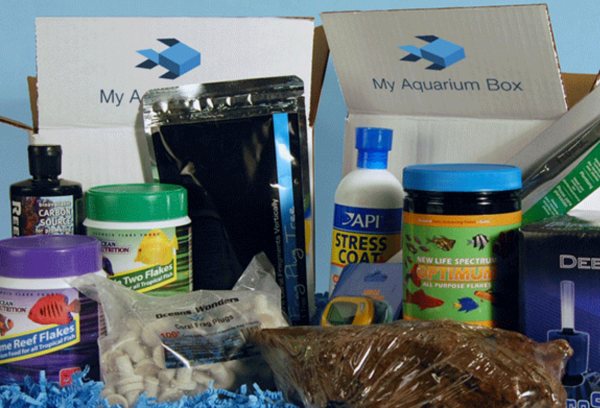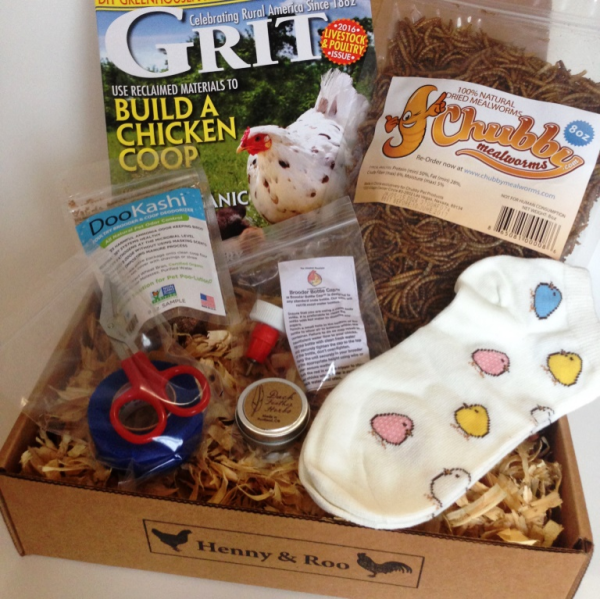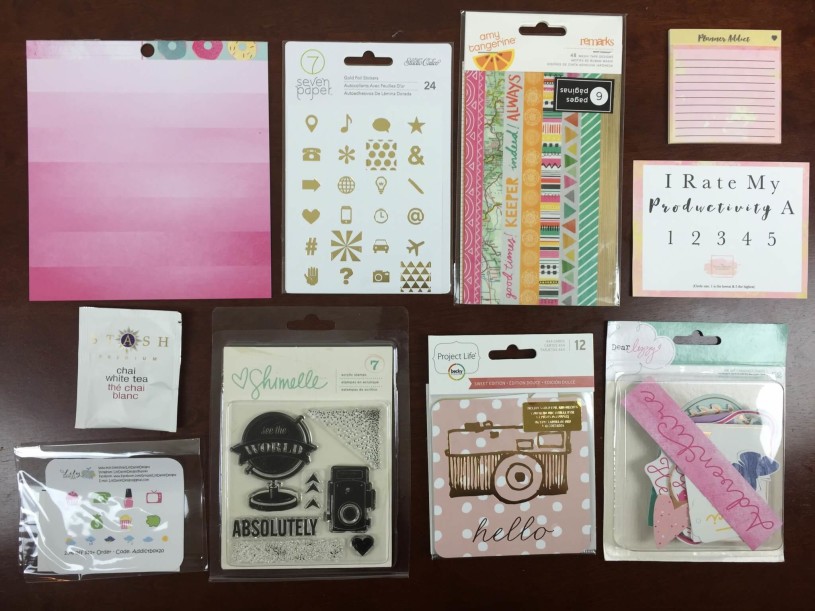Something we don’t talk enough about is the fact that subscription crates and services in their current form are only possible because of the way technology and communications have developed over the past few years. Logistics, shipping, transactions and even simple customer service have all been revolutionized in the very recent past. As a software company, of course, maybe we’re prone to be overexcited about that — but if you really think about it, more questions and areas to explore begin to open up.
If the modern subscription service is made up fundamentally of parts that didn’t exist or work the same way five years ago, then the subscription economy itself is a very young thing, from the future: It’s a Wild West scenario, in which the best practices and etiquette and most comfortable matches between customer and product are still being figured out, refined and designed. Even for the hardiest traveler, going without a compass can be a little unnerving from time to time.
For this roundtable, we asked some brave pioneers of the subscription box frontier what gave them the most trouble as they grew, what approaches worked and which ones failed miserably, and ultimately how they overcame those challenges to find success.
Pioneering Pitfalls and How to Avoid Them
“Some of the pain points I have experienced as a pioneer have been trying to figure everything out myself, so that I can make sure my customers have all of the right information. At the very beginning stages of the business there were things I was barely learning, and finding out about — and I needed to make sure that I had all of the correct answers for my customers… As a pioneer, I have had to learn a lot of it through experience.”
Vienna from Planner Addict Box
Being Your Own Boss
That particular learning curve was a theme throughout the responses: that business acumen and elbow grease are, of course, necessary ingredients, but like any venture, they aren’t the only ingredients. You also need time. And when it comes to balancing your everyday life with your small business, it could also mean you need to figure out or deepen a whole new relationship with yourself. We can be unpredictable creatures! Often that same creativity that keeps you going can turn around and throw a wrench right in the works. Being the boss means making it work.
“I thought I’d make a better boss for myself than those I had been working under. My potential in the workplace was being stifled and I felt the need to explore it and see what I could make for myself. I have two small kids and I want to show them that they have options.”
Kate at Terra Bella Box
“If I am late on a deadline, I’m a high level of stressed. It impacts relationships, because when you own your own business, you can’t turn off work-brain. I’m so grateful for the freedom in my personal life that I’ve gained by being my own boss. The flip side is that it’s a lot to have on your shoulders.”
Justine at The Book(ish) Box
“Working for yourself has its benefits and freedoms, but it’s harder than clocking in and out of a regular day gig in my opinion. You have to keep moving forward or you don’t get paid. That’s a lot of motivation. It takes tenacity, social skills, and knowing when to hire or recruit others to do tasks that you can’t do. I’m lucky as I’m a ‘jump in headfirst and see what happens’ kind of guy, where my wife keeps the fire burning. I focus and get things started and she complements me by making sure things are organized and can continue. We make a great team. That’s also important, having a good team to balance out your endeavors.”
Wayne at Dungeon Crate
And it’s true that working with the right people is key. If you get stuck in the headspace of wanting the “best” people, note: The best people are the ones you work best with, nothing more. Often, the best people are the best at telling you how valuable they are. The right people are a lot harder to find, but it’s worth it.

“This is our first venture as a business, so everything is new and exciting. We run into new challenges all the time, and we overcome obstacles as a team. Our key to success so far has been excellent communication. We use WhatsApp religiously, all day every day in order to stay updated and share ideas. We jump on a Google Hangout once or twice a week just to find smart solutions to problems in real time and as a group. With this mentality, we haven’t run into anything that we haven’t been able to solve.”
Greg at My Aquarium Box
Every team is different and every enterprise needs different skills and ideas. In fact, even that mixture is a moving target: Often the perfect solution for a problem at one point in our life cycle can become a problem later if we don’t see it for what it is, and vice versa. We get into autopilot mode, and that’s when boredom sets in, and nothing attracts the gremlins like boredom.
For some of us, planning and contingencies are the way to tame that inner prankster. When you’ve cleared the way to your goals the best you can, stacked the deck and gotten a clear look at where you’re heading, you’re free to take your time getting there. A lot of the most creative and successful ideas were stumbled over on the path to something else. But that doesn’t mean clarity isn’t an asset.
“The hardest part is making sure that you have enough energy to devote to all of your businesses. If you put a lot of energy into one, and sort of forget about the other one, it’s likely that one or both of them will eventually fail…”
Sander at PlowBox
Building Your Toolkit

So you’ve got your ideas, your team, and your basic processes under flexible control — what’s the next speed bump people tend to hit? That’s about building your perfect toolkit. Finding a good resource or software for a given need is often a matter of asking around, relying on random advice.
But even in one tiny slice of the business world, that can be a lot of hearsay. How can you filter out what will meet your needs, your situation — or even more likely, that it’s not just buzz being repeated by a person without any real stake at all, beyond feeling helpful?
“Shipping continues to be a challenge. While Cratejoy makes the process easy, USPS costs continue to rise and take a chunk out of my bottom line. Honestly, I don’t experience many ‘pain points’ with this business, other than the fact that I shake my head when I realize that mealworms are a big part of my life now! I’ve always been pretty adventurous when it comes to starting new projects – it’s what excites me and keeps life interesting.”
Tina at Henny & Roo
“Not having something like Cratejoy at the beginning was a huuuge pain point. We were manually managing things, it was a mess, and no one was happy. Fortunately, you guys came along and fixed that, but it was rough trying to start a box subscription service with nothing to really support it outside of a PayPal account.”
Jacki at Bowtie of the Month Club
But a solution to software problems isn’t the end of the questions. Every decision on down the line is based on the best information you can find, and sometimes — since the blessing (and curse) of subscriptions is how specific they can be and still turn a profit — that information doesn’t fit. Not always for a reason you can figure out right away, or at least not without some trial and error, detailed plans, and so on. But the best way to figure out rough sketches for those solutions, we were told again and again, is a healthy prelaunch.
It’s hard to tell a passionate box founder, when they’re at the start and bursting with ideas, just how long prelaunch should take, and how creating a subscriber’s online experience and reaching the people you want to connect with can be so much easier with a lot of runway. It can feel strange to say on one hand, “Subscriptions are a low-barrier business model that can fund itself” or “Plenty of people never go into the red” while, at the same time, saying “Hold back; spend your resources on marketing and acquiring subscribers before you start building your first crate.”
“CASH FLOW. When your subscription business really starts to take off, you have to secure products months out – which typically requires putting a lot of capital down to secure orders. All of the profit is invested directly back into the business with the hopes that one day it will pay off in an acquisition or when growth levels off (hasn’t happened for us yet).”
Jon at Sketchbox
Of course, at the end of that learning period, most founders will understand that prelaunch activities — getting a mailing list, seeing who wants to try a beta test or prototype box review, reaching out to your communities and finding ways to connect with them online — are a big part of the fun. After all, for the subscriber, the entire process takes place online, until that first crate arrives.
What some owners can take time getting used to is the fact that so many of these activities can make a big difference in your debut and your ongoing recurring business… and do so even without a lot of cash on the line.

“My first pain point was estimating how much product I would need for the first run — it’s risky. I didn’t give myself a lot of time between the big idea of creating a new box business and launching. I had no idea how many subscribers I would get for that first box and I purchased way too much! I had 11 subscribers sign up, much of them were driven to me via subscription box review sites during the Black Friday rush. I had purchased enough product for 50 boxes. Luckily I was able to make several more one-time sales on my shop page, for a slightly higher price. It’s hard to estimate how many people will want your box if you don’t have a decent pre-launch.”
Lalania at WEvolve Box
Ultimately, as with so many other delicate balancing acts you encounter on the road to subscription success, there is not simply one sweet spot. Product/market fit, smart marketing, and responsive customer service are all necessities for success.
At Cratejoy, we call it the Niche/Product/Audience triangle, and it underpins every single successful subscription service you’ll ever see on the Marketplace.
“Once you start walking, you’re halfway there. Sure, launching probably took far longer than we expected, but that’s normal. I think beyond that, one of the toughest parts was once you launch the site and it goes live, it’s a waiting game. Are people buying into this idea? Was our idea silly? Are we going to fail? Then the first organic order came in, and the second, and the third… It became such a rush. We looked at one another and thought even if only a handful of dudes are interested in this during the first few weeks, it means we’re on to something, and we simply need to get it in front of more eyeballs.”
Matthew at Fresh Clean Tees
Once those three keys are locked in, refined, rebalanced and rebooted, you can get more comfortable and find an audience that’s comfortable with you: no amount of tools, programs, heated discussions or networking opportunities is going to get that done. When we talk about product/market fit, we’re talking about the thing you can affect (the product) and overlooking the thing you may be able to meet more than halfway: the community of people out there passionate about the same things you are, and who would be more than happy to see what you’ve got to offer.
“I think it’s important to remember not to take negative feedback too personally, but use it to improve your product. While there may be one person that can never be pleased, there are many people that are easily pleased. Good customer service and putting care into your product will always manifest itself in happy customers. Our fans are passionate about what we do, and they recognize and appreciate our commitment to our product.”
Sander at PlowBox
One way to think about the curational aspect of many subscription boxes could be outsourced creativity. Getting yourself a monthly treat that’s both a surprise — since you didn’t choose the contents — and a comfort — since you trust the box’s founder to know you well enough you won’t be disappointed. You only get one shot at retention: once you ship, every moment is a chance for subscribers to churn. That means getting, and staying, attuned to what your ideal subscribers want and need.
“I can luckily say the pain points have been minor. Most of the work has been done by the community. All of the major press we received was from people who saw it on Facebook when suggested by friends. We had over 5,000 shares on Facebook the day we launched, popular blog posts… It all came from Cuban friends telling Cuban friends. The community is built into abuelamami.com, in the sense that it’s all about Cuban products that people know and recognize. These products are everywhere here in Miami but that is not the case north of central Florida.”
Humby at Abuela Mami
As with any business, you’re looking at a mixture of learning, demonstrating adaptability, the willingness to hold your breath and jump, and paying attention to what works and what doesn’t. We provide ourselves with a million chances a day to get distracted, to fall short of our goals, and to act against our best interests. You need a still point to focus on when things get weird – and they will. For some of us, it’s ambition itself that keeps us passionate, obsessed with improving, making our business more efficient. But for a lot of us, that ambition isn’t enough.
Establishing passion at the center of your business is, for an artist, the crucial difference. When you’re seeing the numbers jump every month, as more and more subscribers continue month to month, you’ll see and be able to know exactly how well you are doing and why. Success is its own inspiration and its own reward. But in the early days, with so much to learn and so many options, so many tweaks and fine-tuned ideas yet to come, it’s simply knowing that you can do it that will keep you going.
We build these systems and imagine these distressing contingencies for two reasons. First, for our worst days: to keep going whenever things are falling apart, to switch to another idea or another task long enough to get perspective. But also, too, as a blueprint for the best days. To one day look back and see how far it can take you, once the path is cleared of obstructions and pointed toward the goal: creating, and sharing, your joy.
For more information on overcoming early problems before they start, read the 3 Questions You Must Ask at Subscription School, powered by Cratejoy — and don’t forget to come back for more Case Studies, Roundtables, and other reports from the frontlines as we bring you the most useful and valuable information we can find, from the people who know the business best.



